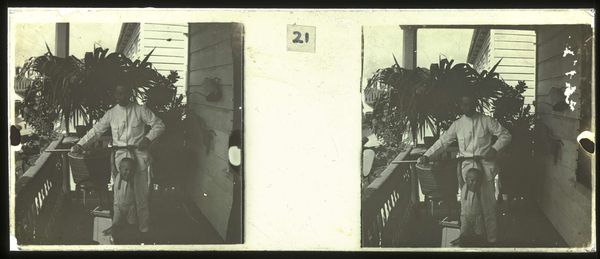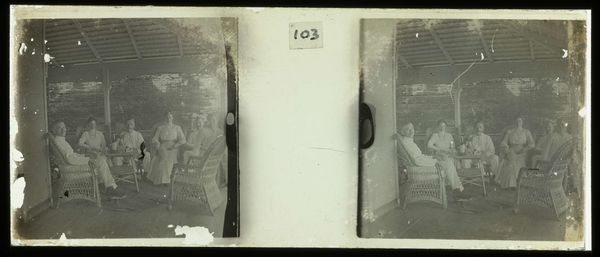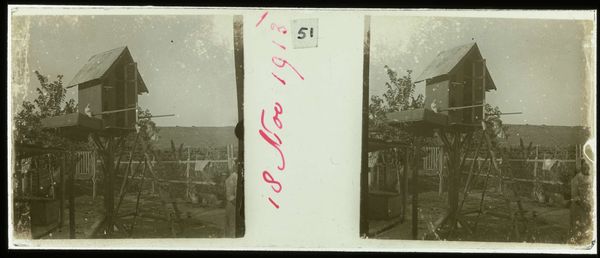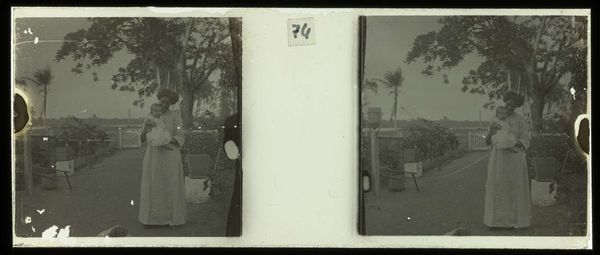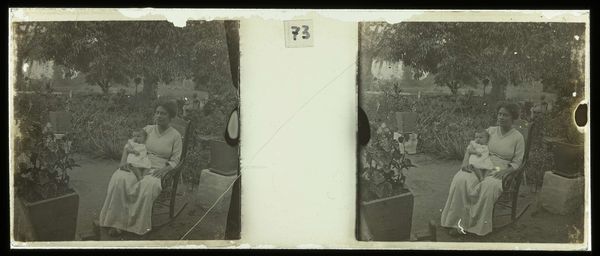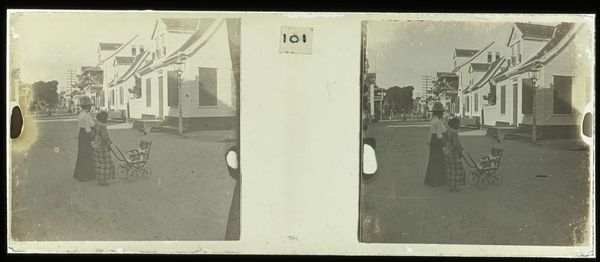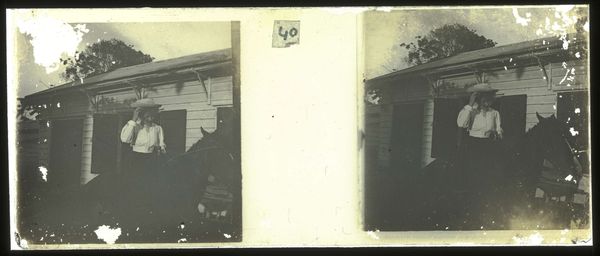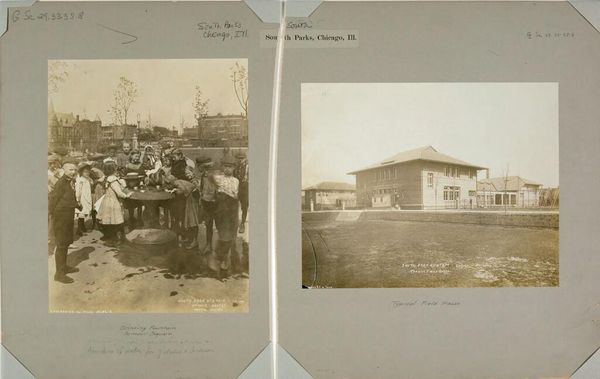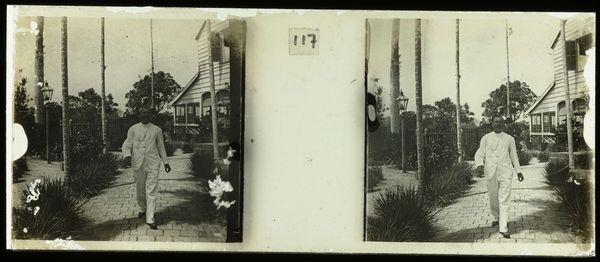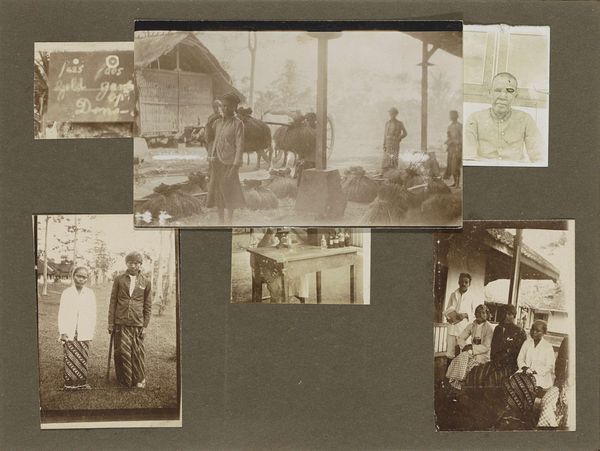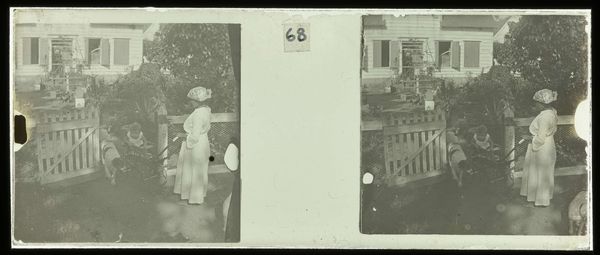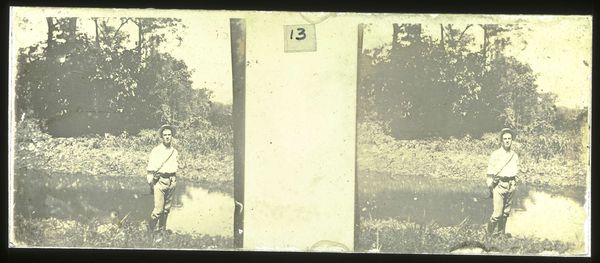
print, photography
# print
#
street-photography
#
photography
Dimensions: height 4.5 cm, width 10.5 cm
Copyright: Rijks Museum: Open Domain
Curator: Looking at Theodoor Brouwers's photographic print "Paramaribo", which dates from sometime between 1913 and 1930, my immediate reaction is to notice how much the atmosphere depends on its silvery tonality and depth of field, don't you think? Editor: The thing that hits me is how raw the picture is, almost unfinished; you can almost feel the hand of the photographer working with the materiality to coax an image into being. Look at that scratched surface. Curator: True, but the structure of the composition interests me more. Note how the veranda's carved details act as a kind of proscenium arch, framing the houses behind. The textures! Editor: The veranda is clearly constructed: see how that structure serves a purpose and shapes labor, culture, and perhaps even serves the photographer in how they construct and take this image. Think about the actual human beings involved in its production. Curator: Precisely. Those horizontal lines divide the picture plane, giving the architecture an almost abstract quality, don't you think? A rhythmic interplay between dark and light! Editor: Perhaps, but it strikes me the real architecture exists not within the picture but in the actual city—the hard work and materials needed to shape the world, a labor mostly invisible in this framed setting, which is also an architecture of class and seeing. Curator: I would concede there are socioeconomic aspects at work here, as you suggest. And yet, these receding planes of vision construct such compelling formal relations... Editor: Those formal qualities themselves arise from material conditions. If we're talking rhythm, what kind of work creates these temporal cycles? Is that person selling goods? What labor has defined what and how it's seen and valued in that specific street. Curator: Maybe what I appreciate about the piece now is the very tension between surface and subject and also the ways you perceive the meaning beneath it all! Editor: Ultimately, the magic of it is the intersection: this object allows a gaze that’s itself embedded in the physical reality it both captures and obscures.
Comments
No comments
Be the first to comment and join the conversation on the ultimate creative platform.
